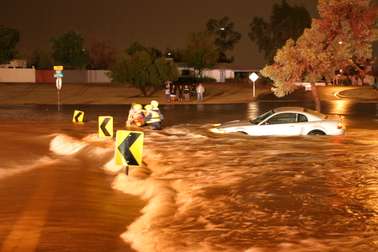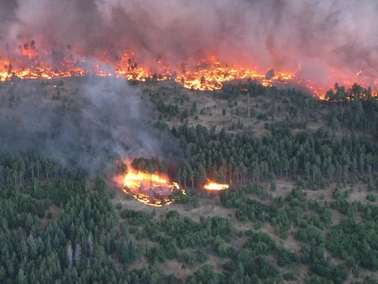Researchers detail climate-change impacts in ecological journal

The coming century will bring many changes for natural systems and for the human societies that depend on them, as changing climate conditions ripple outward to changing rainfall patterns, soil nutrient cycles, species ranges, seasonal timing and a multitude of other interconnected factors. Many of these changes have already begun.
The November 2013 issue of the Ecological Society of America's journal, Frontiers in Ecology and the Environment, is devoted to an assessment of climate-change impacts on ecosystems and the consequences for people.
"The impacts that climate change has had and will have on people are interwoven with the impacts on ecosystems. I think that we instinctively know that. In this assessment, we try to draw that connection," said guest editor Nancy Grimm, professor with Arizona State University's School of Life Sciences and senior sustainability scientist with the Global Institute of Sustainability. Grimm is also senior author of two of the papers.
To produce this special issue of ESA's Frontiers, a diverse group of over 50 ecological scientists and other stakeholders condensed and illustrated the work they had done for a technical input report on biodiversity, ecosystems and ecosystem services for the U.S. National Climate Assessment. The assessment is due to be released in 2014.
The collection is aimed at both ecologists and practitioners. The authors hope to demonstrate the potential for researchers to collaborate with practitioners in identifying "policy relevant questions" – information that practitioners need to make science-based decisions about management of natural resources. Grimm would like to see more academic researchers designing "policy-relevant questions" into their research programs so that research projects may address the data needs of managers while tackling basic science questions.
The authors designed the collection of reports to demonstrate the interrelationships of human and ecosystem productivity, as well as the interrelationships of species, climate and landscape. By properly managing ecosystems, they say, we are also managing their potential to harm or help society. The variability of the natural world demands equal creativity and flexibility in considering a range of complementary solutions to environmental problems.
The special issue tackles five major topics of concern:

Biodiversity
Ecologists have predicted that species will move out of their historic ranges as climate changes and their old territories become inhospitable. This is already occurring. The simple prediction was that species would seek out historic temperature conditions by moving up latitudes, uphill or into deeper waters. But species movements have proven to be idiosyncratic. Because some species can move and cope with change more easily than others, relationships between species are changing, sometimes critically, as interdependent species are separated in time and space.
Ecosystem functionality
Living things have powerful influences on the lands and waters they occupy. As existing ecosystems unravel, we are seeing the chemistry and hydrology of the physical environment change, with further feedback effects on the ecosystem. And, in turn, ecosystem changes feed back to climate.
Ecosystem Services
Impacts on natural systems have direct consequences for crop and seafood production, water quality and availability, storm damage and fire intensity. Working with, rather than against, ecosystems may help society to adapt to changes, such as sea-level rise and storm surge, which threaten lives and property.
Combined effects of climate and other pressures
Species will be hard-pressed to adapt to rapidly changing physical conditions without room to move. Ecosystems are already stressed by habitat loss and fragmentation, pollution and natural resource extraction.
Preparation and management
Adaptation efforts may need to think beyond the preservation of current or historic natural communities. Existing relationships between species and the landscapes they inhabit will inevitably change. We may need to consider managing the changing landscapes to maintain biodiversity and the functional attributes of ecosystems, rather than specific species.
"The change is already here. We are seeing droughts, floods and fires with increased magnitude, duration and shorter return times," said John Sabo, associate professor with ASU's School of Life Sciences. "This intensification of extremes has captured the attention of the reinsurance industry and is affecting businesses across the globe. It will also affect the biota of critical ecosystems – the production of farmlands, subsistence fisheries and forest cover, just to name a few," added Sabo, a co-author of one of the papers and senior sustainability scientist with the university's Global Institute of Sustainability.
Journal information: Frontiers in Ecology and the Environment
Provided by Arizona State University





















